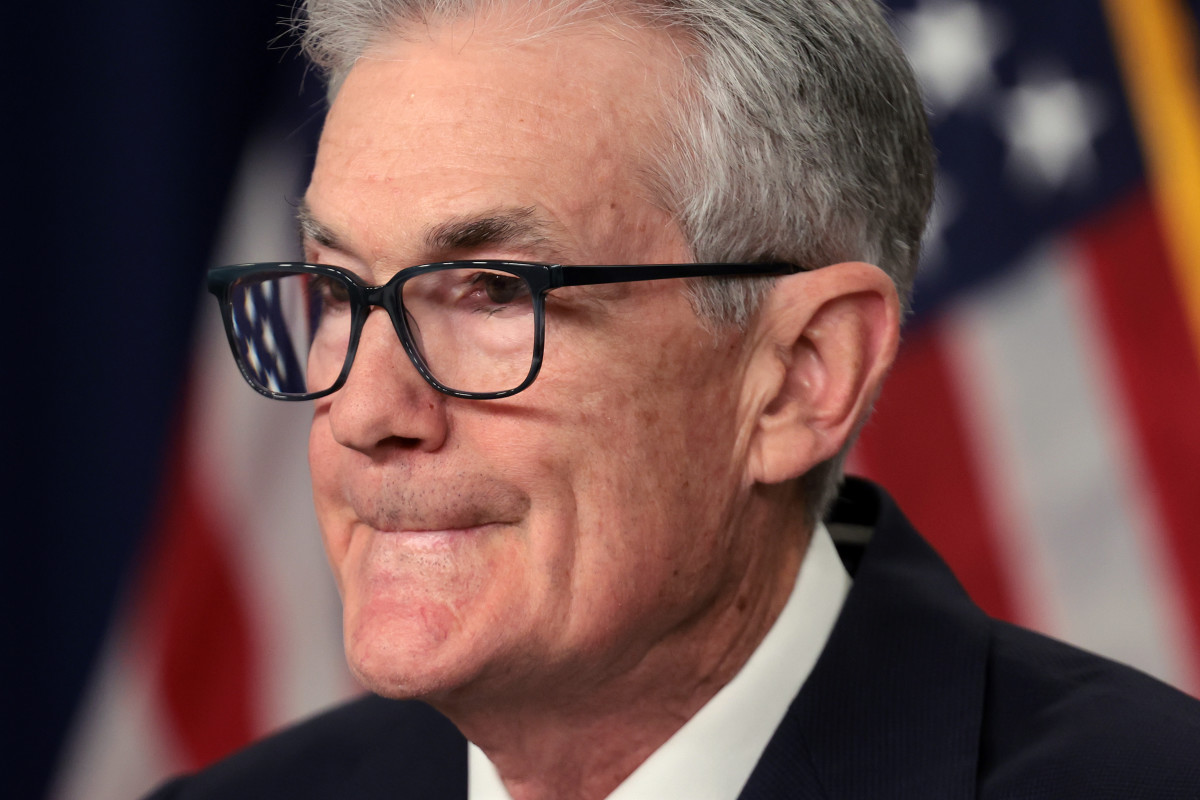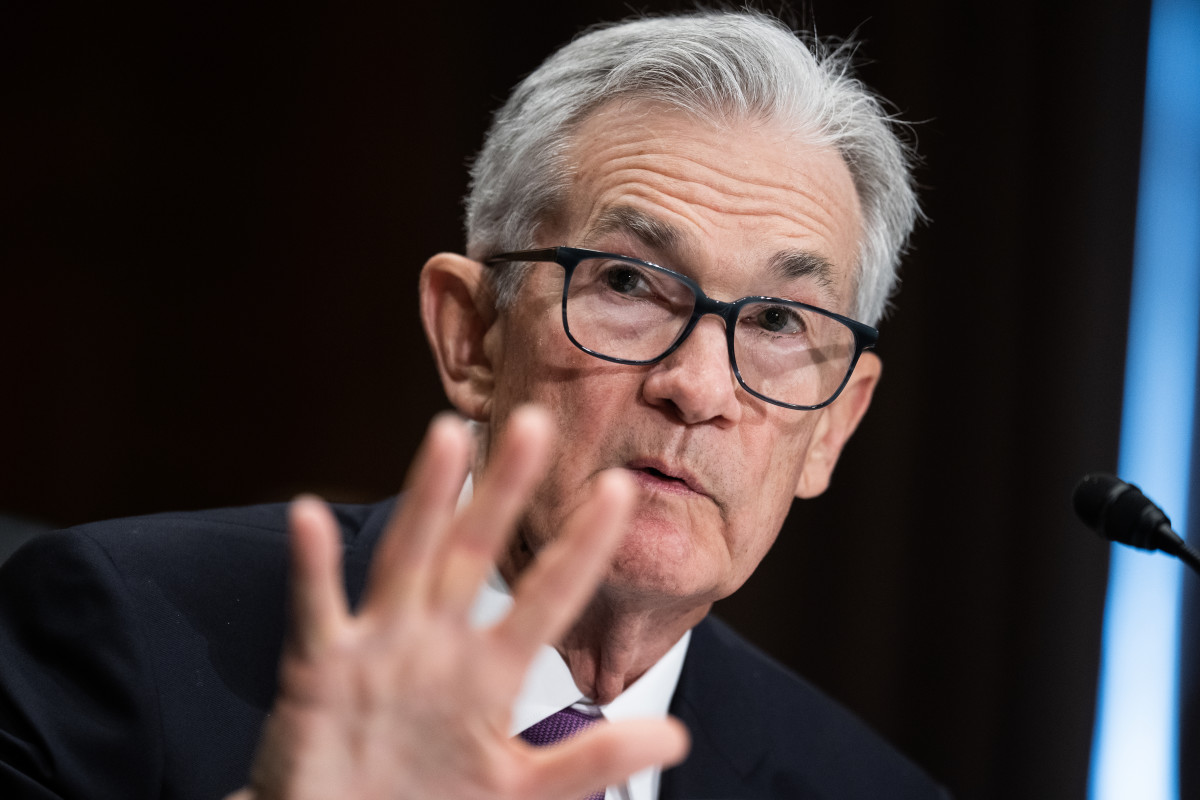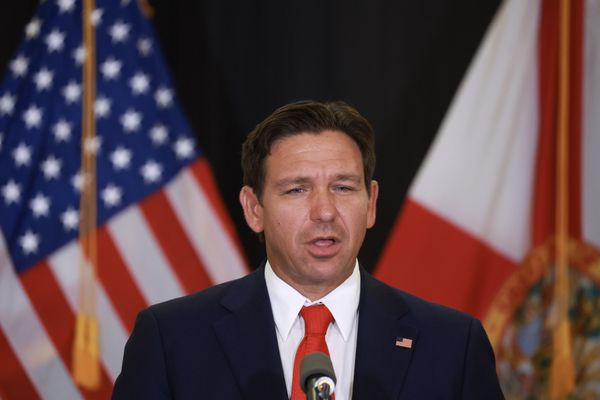
Actors often joke about, but largely take seriously, the adage that uttering the word "Macbeth" inside a theater ensures that the house's next performance is doomed to failure.
Citing "The Scottish Play" instead is that profession's solution to avoiding the worst of all outcomes: a show business flop.
Fed officials, one might argue, suffer from a similar form of superstition, represented in our world by a reluctance to admit even the most obvious of economic developments for fear of "talking ourselves into recession."
That seemed on firm display last month when Fed Chairman Jerome Powell spoke to the media following the central bank's latest policy meeting in Washington, where he insisted that stagflation concerns were "misguided."
“I don’t really understand where that’s coming from," Powell said, adding that his view of the term is more aligned to much higher unemployment and much faster inflation than the economy shows now.
"I don’t see the stag or the ’flation,” he added.

He's probably right, but investors are starting to wonder whether that will remain so over the second half of the year, now that headline inflation rates are stuck at the same levels they were at in December, and signs of a second quarter slowdown are starting to mount.
Slowing growth, cautious consumers
The Commerce Department's second estimate of first quarter GDP growth was hacked last week to 1.3%, the lowest in nearly two years, from its original forecast of 1.6%.
The Atlanta Fed's GDPNow forecasting tool, meanwhile, trimmed its current-quarter growth rate to 2.7%, nearly a full percentage point lower than its update from earlier last week.
Consumers are closing their wallets as well, largely reflecting data that suggest pandemic-era savings have evaporated and relentless price hikes on everything from coffee to eggs and houses and cars have continued apace.
"Consumer spending in the first month of the new quarter slowed as real disposable incomes fell," said Jeffrey Roach, chief economist for LPL Financial in Charlotte, citing data from the April PCE inflation report.
"Businesses need to prepare for an environment where consumers are not splurging like they were last year," he added.
Related: Bonds are freaking out about inflation.
Ian Shepherdson of Pantheon Macroeconomics sees similar pressures and noted that spending over the three months ended in April fell at an annualized rate of 1% from the previous three-month period.
"With the stock of pandemic-era excess savings now greatly reduced, weaker real income growth looks likely to significantly limit growth in consumers’ spending over the next few quarters," he cautioned.
Evidence of a broad-based pullback remains elusive, however, but the gap between large-scale retailers like Costco (COST) and Walmart (WMT) , which remain bullish on growth, and the myriad challenges faced by their mid-market rivals like Target (TGT) and Kohl's (KSS) , is stark.
Stagflation risks are rising
Away from retail, data from the Chicago Business Barometer, which tracks economic activity in the city's Great Lakes region, fell to the lowest levels since the pandemic last month and suggest an alarming level of contraction for a key market benchmark.
The Chicago PMI "unexpectedly" crashed to 35.4 in May, its lowest level in four years, when the economy was crippled by Covid lockdowns. This not only indicates the U.S. economy is already in #recession, but #stagflation, as all indicators point to a reacceleration of #inflation.
— Peter Schiff (@PeterSchiff) May 31, 2024
Inflation, meanwhile, remains maddeningly sticky despite the most aggressive series of Federal Reserve rate hikes on record, which have the central bank's main lending rate at a 22-year high of between 5.25% and 5.5%.
Core consumer prices rose at an annual rate of 2.8% last month, the Bureau of Economic Analysis reported late last week, a level that is just 0.1 percentage point lower than it was at the end of last year.
That could put the Fed in a deeply uncomfortable position, one that Powell was loath to entertain when he spoke to reporters last month, especially if this week's May employment report shows deeper cracks in the slowing job market.
Related: Fed rate cuts face big reset on renewed inflation risks
"The surprise will be stagflation," JPMorgan Chief Executive Jamie Dimon told the bank's Global China Summit in Shanghai last week.
"I'm not saying it's going to happen; I just give the odds much higher than other people," he said. "I think inflation is stickier than people think. I think the odds (of stagflation) are higher than other people think, mostly because the huge amount of fiscal monetary stimulus is still in the system, and still maybe driving some of this liquidity.”
Rate cuts, but for the wrong reason?
Stocks have been counting on Fed rate cuts to amplify their current-year advance and, potentially, address investor concerns that outsized gains for big tech stocks such as Nvidia (NVDA) , Meta Platforms (META) and Alphabet (GOOG) are flattering an otherwise muted year for stocks.
The S&P 500 Equal Weight Index, which provides a more balanced view of overall performance, is up only 3.4% so far this year, compared with the near 10% gain for the benchmark.
Data from Bank of America's Flow Show report, meanwhile, noted that overall market breadth is stuck at the lowest levels since March 2009 thanks to the overpowering influence of the so-called Magnificent 7.
That could leave markets at risk of a pullback as rate-sensitive tech stocks retreat as the Fed maintains its "higher for longer" interest rate stance.
Related: Key bond market signal sounds inflation alarm
At the same time, while a rate cut may support further Magnificent 7 gains, it could suggest the kind of economic weakness that won't underpin gains for the rest of the S&P 500 or the broader market.
"We are in a be-careful-what-you-wish-for moment because if slowing consumer spending leads to lower inflation and the Fed is able to cut slowly as a result, then that will be good for markets," said Chris Zaccarelli, chief investment officer for Independent Advisor Alliance.
"However, if consumer spending – and the economy – slows too quickly, then corporate profits and stock prices will go down much more quickly than the Fed will be able to cut rates, so we would be careful at this point," he added.
Jobs-data parade on deck
This week's slate of labor-market data will go a long way in defining the Fed's likely next move. Investors will get data on April job openings on June 4, payroll-processing group ADP's National Employment report on June 5 and the Labor Department's May nonfarm-payrolls report on Friday, June 7.
More Economic Analysis:
- Bonds are freaking out about inflation
- Key bond market signal sounds inflation alarm
- Fed rate cuts face big reset on renewed inflation risks
Rate traders seem willing to wait for that clarity, with CME Group's FedWatch tool suggesting just a 53.2% chance of a September rate cut following no changes to its policy rate in June or July.
"Ultimately, the Fed will cut rates in one of two ways. Either the economy weakens to the point where it needs looser financial conditions or inflation cools down," said Brent Kenwell, U.S. investment analyst at eToro. "But there’s an obvious preference for the latter."
Related: Veteran fund manager picks favorite stocks for 2024







